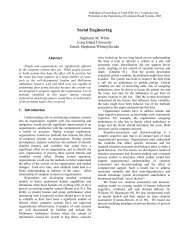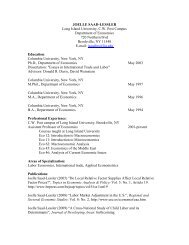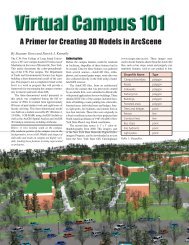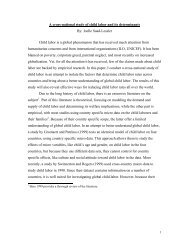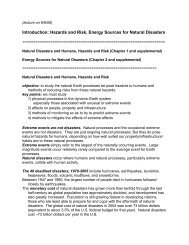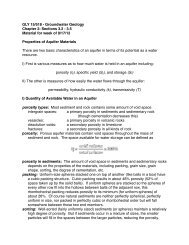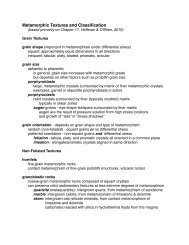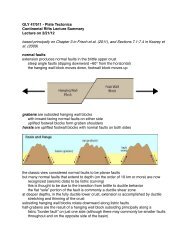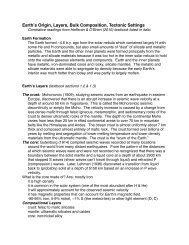Homework 1 - Myweb @ CW Post
Homework 1 - Myweb @ CW Post
Homework 1 - Myweb @ CW Post
You also want an ePaper? Increase the reach of your titles
YUMPU automatically turns print PDFs into web optimized ePapers that Google loves.
---! Next, list bonds e-k, in order from most covalent to most ionic. Notice that these<br />
are the major elements bonding with oxygen as in silicate minerals.<br />
coordination polyhedra & ionic substitution<br />
6)! Using Figures 2.7-2.8 and Table 2.5 in the textbook, determine the coordination<br />
number and type for the following ions.<br />
! Note: the values listed in Figs 2.7 & 2.8 are for general use but not necessarily the<br />
specific radius in a given compound. The radius listed for Si +4 in b) below is specific<br />
for its bonding with oxygen and differs from the general radius given in Fig 2.7.<br />
! a) Na + relative to Cl - in halite (Cl- ionic radius: 1.72 Å)<br />
! b) Si +4 relative to O -2 in silicates (Si +4 ionic radius here is ~0.34 Å; Faure, 1998)<br />
! c) Al +3 relative to O -2 in silicates<br />
! d) Na + relative to O -2 in silicates<br />
! e) Fe +2 relative to O -2 in silicates<br />
7)! Atomic and ionic radii vary with valence state but also with the type and number of<br />
surrounding ions (for example, see Table 2.6). Determine the coordination number<br />
and type for carbon in carbon dioxide and in carbonate ions:<br />
! a) C +4 relative to O -2 in CO2 (radius of C +4 in CO2: 0.16 Å)<br />
! b) C +4 relative to O -2 in CO3 -2 (radius of C +4 in CO3 -2 : 0.29 Å)<br />
!<br />
8)! Determine whether the following substitutions will occur. Show why or why not, and<br />
if coupled substitution is required. Use Figure 2.7 and Table 2.6 for cation radii (note<br />
correct coordination in Table 2.6).<br />
a) will Mg +2 substitute for Fe +2 bonded to O -2 in silicates<br />
! b) will Ca +2 substitute for Na + bonded to O -2 in silicates<br />
! c) will K + substitute for Na + bonded to O -2 in silicates



